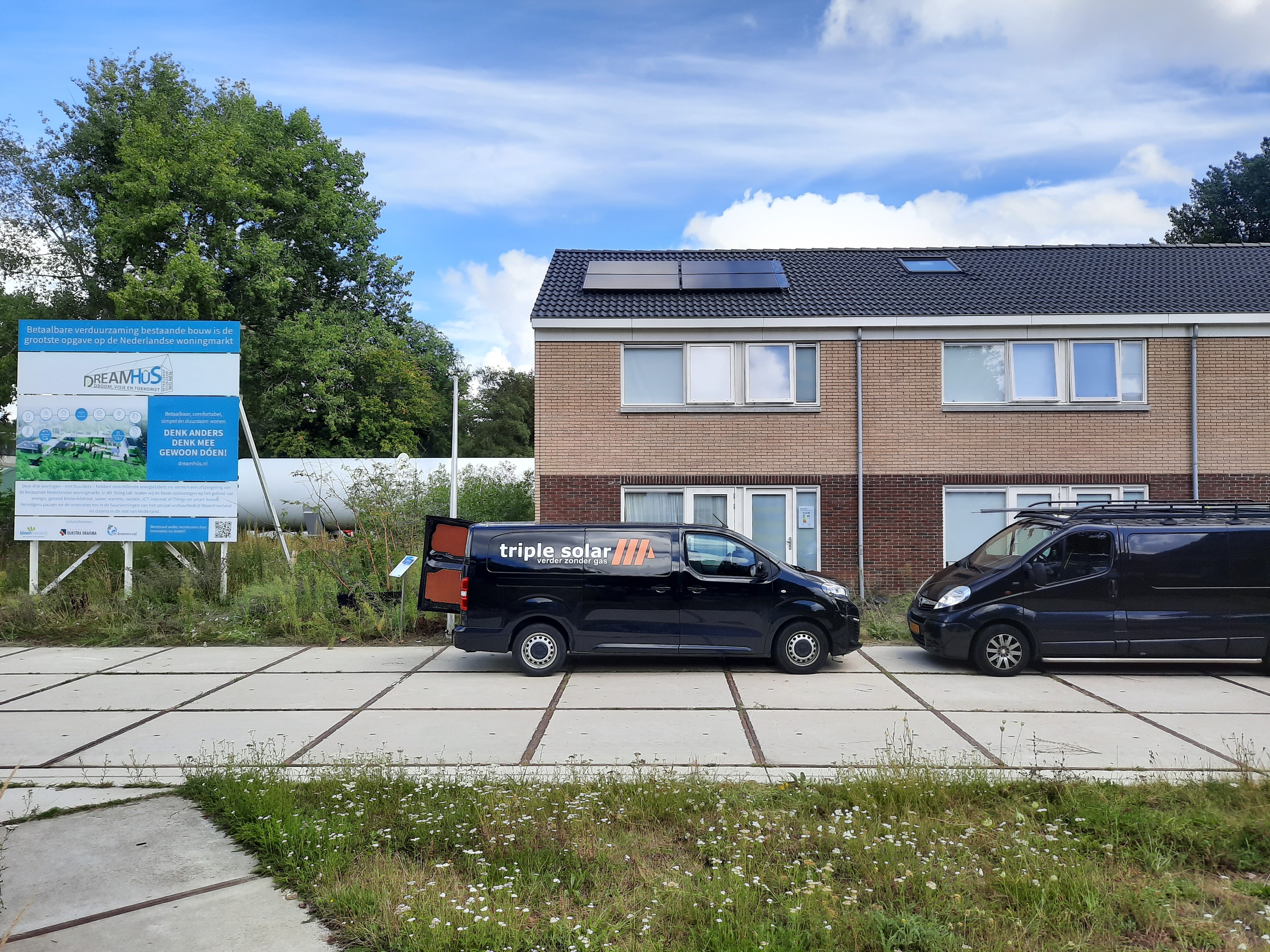Existing neighbourhoods energy-neutral thanks to innovative solar heat network
A solar heat network has proven to be technically and financially feasible for making existing neighbourhoods more sustainable and natural gas-free, as demonstrated by a consortium of scientists and companies led by TU Delft. The consortium developed the technical aspects of this concept and calculated the technical and financial effects for Haarlem’s Ramplaankwartier neighbourhood, which was built in the 1930s. In addition, a test set-up in the DreamHûs at The Green Village in Delft was used to demonstrate that the system works. This has resulted in a design for the sustainable heating of houses in an entire neighbourhood, without the need for an external heat source.
In order to achieve the goals set out in the climate agreement, researchers are working hard to find ways to make existing neighbourhoods and buildings more sustainable and to disconnect them from the gas grid. The solar heat network is one of the possible solutions developed and tested over the past year. The solar heat network consists of photovoltaic thermal (PVT) solar panels on roofs, which generate both heat and electricity, combined with a very low-temperature heat network linked to an underground thermal energy storage (UTES) system and a heat pump in each house. In this way, the houses are provided with hot water, heating in the winter and cooling in the summer in an energy-neutral manner.
Smart heat distribution
A special ‘delivery kit ’ – a cabinet with pipes, pumps and valves – ensures that the heat from the heat network and the PVT panels is used optimally. In the summer, all excess heat from the PVT panels is stored in the UTES system through the network. In the spring and autumn, the heat is supplied by the PVT panels as well as by the network from the UTES system. In the winter, the heat is mainly supplied by the UTES system, enabling the heat pump to achieve a high efficiency. A test set-up of the solar heat network was built and successfully tested in the DreamHûs at The Green Village on TU Delft Campus. "DreamHûs" is the name of the 70s houses at The Green Village that were placed there through the collaboration of a consortium.
Design ready for sustainable neighbourhood solution
The study in Haarlem and the test set-up in Delft have produced convincing results. The design of the solar heat system has been worked out in detail. For example, the required number of PVT panels for each home has been calculated, along with the required temperature levels for heat storage and heat distribution. In addition, tests have been performed to determine how all the settings can function together in a stable manner. Based on these tests, the conclusion was that the system works technically and that homes in the neighbourhood can be supplied with enough heat year round using the panels and the solar heat network. The panels generate enough electricity to drive the heat pump, thus making the system energy-neutral for the heat supply. Ivo Pothof, a researcher at TU Delft and Deltares, is enthusiastic about the solar heat network: “It’s the most sustainable neighbourhood solution I’m aware of for existing buildings, because the use of local energy is maximised by means of the PVT panels. The concept has been extensively compared with other solutions for existing residential areas and comes out on top in all those comparisons.”
Financial feasibility
The solar heat network has also proven to be an interesting concept from a financial point of view. Following a substantial initial investment, there will subsequently be no more variable energy costs. The solar heat network will therefore become cheaper than gas and most other alternatives after a few years. The annual costs will then only consist of maintenance and repayment of the investment. The electricity needed by the heat pump itself is generated by the PVT panels. In addition, the electricity grid will not have to be upgraded, because there is no peak consumption in the winter. So with sufficient participation in the neighbourhood and a low interest rate, the solar heat system is also interesting in financial terms.
Implementation
The consortium, which consists of TU Delft, Deltares, Greenvis, Stichting SpaarGas with the Municipality of Haarlem, Triple Solar, Fortes Energy Systems, the WarmteTRansitieMakers and ENGIE, hopes that the solar heat network will become a common method to make existing neighbourhoods more sustainable.
The results of the research are described on the website www.zonnewarmtenet.nl. Administrators and other bodies can also find more information on the solar heat network on the site. Ivo Pothof: “Now that the effectiveness of the solar heat network has been proven, it is important to inform interested parties as clearly as possible. In this way, even more existing neighbourhoods can be made energy-neutral.”
This project was made possible by the Top Sector Energy grant by TKI Urban Energy, of the Ministry of Economic Affairs and Climate, reference TEUE018017 for ‘Low-Temperature Feed-in Solar Heat Networks’ (Lage temperatuur feed-in zonnewarmtenetten, DeZONNET).
More information
Ivo Pothof, researcher at TU Delft and Deltares, I.W.M.Pothof@tudelft.nl
Roy Meijer, Science Information Officer TU Delft, +31 6 14015008, r.e.t.meijer@tudelft.nl

